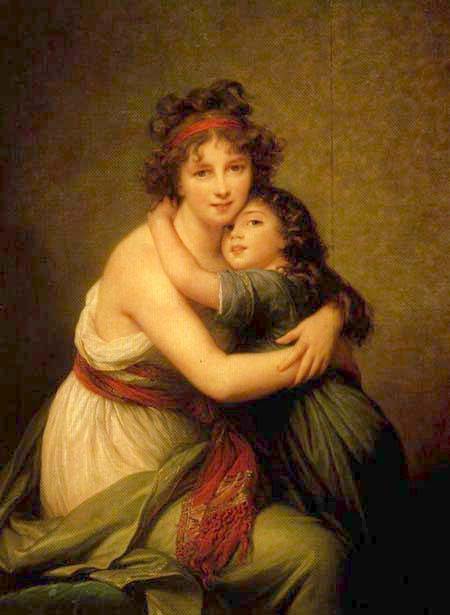Elisabeth-Louise Vigee Lebrun was a painter born in Paris in 1755. Her father painted fans and portraits, and he was her first painting instructor. She began painting portraits professionally as a teenager, and throughout her lifetime received patronage from very powerful and wealthy people, as is evidenced by the titles in the titles of many of her oil portraits (i.e., Baroness, Prince, Marquise, Countess, Duchess, Count, etc.). She traveled widely, partly due to the French Revolution, to locations such as St. Petersburg and Vienna. She was perhaps best known as earning a position as the court painter for Marie Antoinette, and as a rare female member of the French Academy of Arts, but she also painted Catherine the Great and gained membership to the St. Petersburg Academy of Arts.
Vigee Lebrun’s style was notable in its diversity, and she has been described as sometimes sacrificing the ideal of perfect likeness for her desire for a more perfectly palatable composition. One of her themes is the idealization of mother plus daughter within portraits, and it is lovely to note how many of her self portraits are available for contemporary art lovers’ enjoyment. To compare her Self Portrait with Daughter, in which she and her young daughter Julie are so naturally embracing each other while dressed in modest peasant-artist style clothing, with Portrait of Marie Antoinette and Children illustrates what range she had as a painter. Marie Antoinette’s pale skinned facial features seem to lack the details apparent in the sumptuous surroundings, right down to the pattern and tassels of the pillow under her feet. The children look cherubic, as they often do in Vigee Lubrun’s paintings, and they are painted with the same look of devotion in their eyes that Julie appears to have in each portrait in which she appears.
Vigee Lebrun’s portrait of Lord Byron is a fine example of her ability to capture important qualities about her subjects. By pairing careful brushstrokes with her sensitivity to the subtle aspects of personality, she revealed his dashing romantic poet disposition. He looks off to the side, as if distracted, and his curls are carefully rendered yet slightly wild. The fact that she earned herself opportunities to paint so many notable 18th century figures attests to her skills as a painter of character, not just physical characteristics, of people.
Author: Julie Ann
